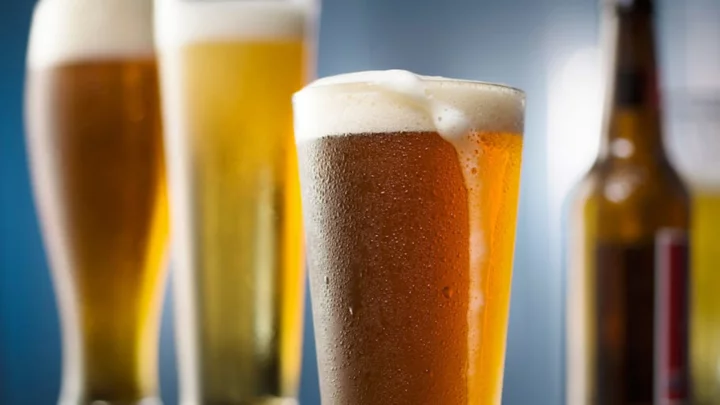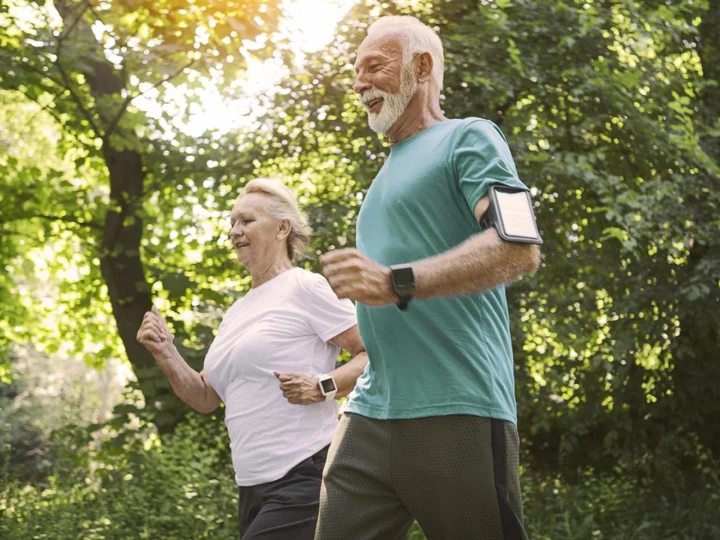
Waste Not: This Beer Is Made From Recycled Shower Water
Who wants to buy a round of wastewater brews for the gang?
2023-08-08 00:18

Coronavirus: Can your dog or cat get Covid-19 and can you catch it from your pet?
In February a pet dog in Hong Kong tested ‘weak positive‘ for coronavirus and was placed into quarantine. The Agriculture, Fisheries and Conservation Department (AFCD) in Hong Kong confirmed that repeated tests suggested the dog had a “low-level” of the virus and that it was likely to be the case of human-to-animal transmission. The dog, a Pomeranian, had not shown any symptoms for the illness but its owner was confirmed as being infected with Covid-19. Now pet owners are becoming increasingly concerned they could catch the deadly disease from their animals - but is that scientifically possible? Can I catch coronavirus from my pet? On 2 April a Chinese study showed that cats are "highly susceptible" to coronavirus and it can easily be passed between them. But only five cats were involved in the experiment. This follows the news that a cat reportedly contracted coronavirus in Belgium but health authorities in the country said it was an "isolated case" and not "the rule". There are still no reports of animals in the UK with coronavirus. On 13 March the World Health Organisation said "at present there is no evidence that companion animals/pets such as dogs or cats can be infected with the new coronavirus". Several global health organisations have issued advisories saying there is no any evidence that pet animals can spread coronavirus or indeed be infected with it in the same way as humans. “Therefore, there is no justification in taking measures against companion animals which may compromise their welfare,” the World Organisation for Animal Health has said. The Centers for Disease Control and Prevention concurred that “there is no reason to think that any animals including pets in the United States might be a source of infection with this new coronavirus”. Raymond R.R. Rowland, a veterinarian who specialises in swine viruses at Kansas State University, said that “weak positives” frequently show up in testing pigs, where a farmer’s livelihood can be at stake. “I’ll tell you what I tell them,” he told The New York Times. “Wait and see.” Even if the Pomeranian has a low-level infection, he said: “that doesn’t say the animal is sufficiently infected that it can spread the virus.” The dog could simply be a host for the illness that neither becomes unwell or infects other people or animals. Should I change my behaviour with my pet? The World Health Organisation says: "It is always a good idea to wash your hands with soap and water after contact with pets. “This protects you against various common bacteria such as E.coli and Salmonella that can pass between pets and humans.” To protect yourself from catching coronavirus, the WHO advises the following: Cover your mouth and nose while sneezing, with a tissue or your elbow Put the tissue straight into a closed bin Wash your hands afterwards, and then frequently, with soap or sanitiser Keep your distance from people who are coughing and sneezing (at least one metre) [[Updated UK government advice also says people should stay at home and practice social distancing]. You can read more about the WHO’s advice on coronavirus here. Read More What are symptoms of coronavirus – and where has it spread? Latest travel updates as coronavirus continues to spread Can face masks really protect you against coronavirus or flu? The dirty truth about washing your hands Greg Rutherford had mystery allergy left him ‘screaming and clawing at his skin’ What is Lyme disease? Bella Hadid reveals ’15 years of invisible suffering’ Study reveals how muscle cells deteriorate with age, hampering injury recovery
2023-08-07 23:54

Greg Rutherford rushed to hospital after mystery allergy left him ‘screaming and clawing at his skin’
Greg Rutherford’s fiancée Susie Verrill has shared that she had to rush the British track and field athlete to the hospital on Saturday (5 August) after an unknown illness left him “clawing at his skin and just screaming”. Verrill, a social media influencer and blogger, posted about the incident on her Instagram page on Monday morning (7 August) and described it as the “scariest time” of her life. Alongside a photograph of Rutherford, 36, sitting up in a hospital bed and appearing to grimace, she explained that the day began normally and that she went to their friend’s house for a roast dinner with their three children. Verrill said she later received a text message from Rutherford informing her that he might be having “an allergic reaction to something and felt itchy”, but she did not think it was an emergency. However, he called shortly after “screaming” on the phone, she wrote, adding: “And I mean SCREAMING. He shouted, ‘YOU NEED TO GET HERE NOW’ and so I drove back to our house while calling an ambulance, terrified I was about to get home and find him not breathing.” The blogger said she was told that an ambulance would take 40 minutes. Once home, she “ran into the house” and found Rutherford inside, “screaming” and “acting like one of those people you see in videos where they’ve taken bath salts”. “He was clawing at his skin and just screaming. Repeatedly. He ran to our car and while I rang 999 again to say I’d have to take him, we had to run every red light and I had to focus on not crashing while he screamed and tried to grab the wheel,” she recalled. “He was delirious and I looked like I was kidnapping him. I was on the phone to the 999 call handler and the poor girl just kept saying, ‘OK yeah he doesn’t sound good, please be safe but hurry’ and I was like OK well this is a nightmare because I’ve been driving like three months. It was AWFUL.” She continued her story in another slide, which showed a close-up of Rutherford’s skin on his thighs. It appeared red with raised bumps, like hives or a rash, covering the surface. Verrill said she “threw [Rutherford] out” of the car in front of the A&E and went to park her car. Once inside the hospital, she was told that staff had sent him to “Resus”, which is a term used for the resuscitation area of the department. “I think [they sent him there] mainly because he was a six-foot-three bloke acting like a psychopath and they didn’t want to scare anyone,” she wrote, adding: “They also pumped him full of steroids and antihistamines and it seemed to work pretty much immediately. Thankfully by the time I got there he’d stopped screaming and raking himself.” In the next slide, she showed Rutherford still sitting up in a hospital bed, but appearing calmer. She said that they were allowed to leave the hospital three hours after they arrived. Verrill added that she “felt close to having a heart attack” but reassured followers that she was fine otherwise. “My question is – we did nothing differently yesterday in terms of eating/drinking but the only snack Greg ate was nuts – could he have developed an allergy, do we think?” she asked her fans. “Have any of you had this? Hospital recommended we get him tested but said it could have also been viral. I appreciate rashes can appear with a viral illness but his body went MAD. The doctor who suggested the viral thing hadn’t seen how Greg had been on arrival; I can’t explain how much pain he was in.” She recalled a time when Rutherford “shrugged off a grumbling appendix” in comparison to how he reacted to the recent illness, and asked followers to let her know if they had ever experienced something similar. In her most recent Instagram Story, Verrill addressed suggestions from fans that Rutherford may have come into contact with a plant on his run that may have caused the reaction. “We don’t think it was any sort of plant because the reaction began before he went on his run (although we appreciate this may have exacerbated symptoms with the sweating),” she wrote. “Greg’s having some tests this morning so hopefully it can start the ball rolling and if I don’t get back to you just yet, I’m so sorry. I’ve had about 500 messages already! Really, really appreciate all the advice.” Rutherford, who participated in Strictly Come Dancing in 2016, also shared Instagram Stories about his experience. In one slide, showing a close-up of his skin from another angle, he wrote: “I suddenly had a massive allergic reaction to something (no idea what) and had to get Susie to rush me to hospital. Thankfully they pumped me with a load of stuff and calmed it down. But it was HORRIBLE. This rash was covering my entire body.” In a second Story, he shared a photograph of himself and added: “I’m not home. A little [itchy] still, but nothing like earlier. I was trying to get my skin off it was so bad. I’m going to get some tests done to figure out what it was, as I NEVER want to experience that again.” The sportsman thanked the hospital staff for helping him, adding: “I was screaming at one point… So apologies for that too.” Rutherford and Verrill have been together since 2012 and share a daughter named Daphne, two, and sons Milo and Rex, eight and five respectively. The couple were due to be married in May, but postponed their wedding because of the death of a family member. Read More Marina O’Loughlin is wrong – there’s joy in solo dining Jamie Foxx and Jennifer Aniston issue statements over ‘antisemitic’ Instagram post Will Smith says daughter Willow’s ‘mutiny’ changed his view on success What is Lyme disease? Bella Hadid reveals ’15 years of invisible suffering’ Study reveals how muscle cells deteriorate with age, hampering injury recovery Bella Hadid looks back on ‘15 years of invisible suffering’ with Lyme disease
2023-08-07 22:16

Taylor Swift didn't want a massive paycheque for use of music in Heartstopper
Taylor Swift was more than happy for her music to soundtrack a "beautiful" scene in 'Heartstopper' without earning mega money.
2023-08-07 19:21

What is Lyme disease? Bella Hadid reveals ’15 years of invisible suffering’
Model Bella Hadid recently shared an update on TikTok, that her Lyme disease symptoms had flared up following a tooth infection. The Dutch-Palestinian 26-year-old was diagnosed with Lyme disease in 2012, and in her latest health update, shared she was struggling with its symptoms once again. “There was a low-grade infection underneath the tooth, next to the tooth I thought was suffering (she’s good) which is the one I got a root canal on a year ago. It continued to spread down, causing a low-grade infection in my jaw,” Hadid shared on TikTok. She continued by saying: “Please listen to your bodies my friends! This made my Lyme flare up, which means the Lyme is attacking the places that are suffering i.e. tooth, jaw, gut, brain, spine, bones etc oh, and the entire nervous system.” So, what is Lyme disease? “Lyme disease is an infection caused by a group of bacteria transmitted through an infected tick, giving you a specific set of symptoms,” says Dr Sanjay Mehta, GP at the London General Practice. According to analysis published in the open access journal BMJ Global Health, more than 14% of the world’s population probably has, or has had, tick-borne Lyme disease. But Mehta says you can’t catch it from any tick, only infected ones. The disease can also be seasonal – “It doesn’t die down to zero, but it drops significantly during summer and winter, and peaks during early autumn and spring,” he says. What are the symptoms? Lyme disease can manifest in a variety of different ways – from being asymptomatic, to nerve damage, in more severe cases. “There are two main groups of patients,” says Mehta. “First, there’s the group who catch it early, and they don’t really get any symptoms – they just see they’ve been infected by a tick. “Then there’s the second group of people who don’t get treatment, and although only a very small percentage of them actually end up with symptoms, they are the ones we worry about. “Those patients tend to get three stages of symptoms. First, they might get flu-like symptoms kicking in a week or so after the bite, and a characteristic rash. Second, some might then get symptoms related to their nerves, their heart and their brain, several weeks or months later. “An even smaller number of people might then get the third stage, and these are the symptoms people typically associate with Lyme disease – long-term joint problems and neurological symptoms.” How do you contract Lyme disease? As Lyme disease is passed on exclusively via infected ticks, you can downgrade the disease from unlikely to highly unlikely by avoiding tick-heavy areas or taking precautions within them. “There are areas of the UK known to harbour infected ticks, like the Lake District, the New Forest, the North York Moors, and the Scottish Highlands,” says Mehta. “If you see ticks on your skin, you don’t necessarily get transmission for up to four hours, so if you can remove them, that’s ideal.” If you are going to any of these areas, there are also a few simple things you can do to limit the risk. “Try to keep to paths in grassy, wooded areas, and keep away from long grass and vegetation,” advises Mehta. “It sounds obvious, but shower on your return – often ticks fall off – and check yourself for them too. Wear insect repellent, long T-shirts, and long trousers if possible.” What should you do if you get bitten? The simple answer is, if you’ve gone to a high-risk area and you know you’ve been bitten by something, see a doctor. “It is worth going on to treatment, which is a course of specific antibiotics,” says Mehta. “We do run tests, and the tests are fairly reliable, but the main things are a) have you gone to a risky area? b) have you seen you’ve been bitten? And c) have you developed symptoms?” “The take-home message is to seek medical help if there is a bite, but be aware, it’s only a small percentage of people who end up with problems.” Read More Charity boss speaks out over ‘traumatic’ encounter with royal aide Ukraine war’s heaviest fight rages in east - follow live Study reveals how muscle cells deteriorate with age, hampering injury recovery Tips and tricks to preserve your harvest Is it heat exhaustion or are you just tired?
2023-08-07 18:52

Study reveals how muscle cells deteriorate with age, hampering injury recovery
Researchers have revealed how muscle cells deteriorate with age, affecting their ability to regenerate and recover after an injury. The findings could help to shed light on why it takes people longer to recover from muscle damage as they age. A team at Nottingham Trent University analysed the genes inside muscle cells, and found the ‘development pathways’ – the different ways in which genes work together to regenerate muscle – become weakened in older cells. We know that healthy muscle regenerates after we’ve had an injury but ageing impairs that regeneration potential and recovery gets harder the older we get Dr Livia Santos, Nottingham Trent University Lead researcher Dr Livia Santos, an expert in musculoskeletal biology in Nottingham Trent University’s School of Science and Technology, said: “This goes some way towards explaining why muscle injuries may take longer to recover as we get older.” She added: “We know that healthy muscle regenerates after we’ve had an injury but ageing impairs that regeneration potential and recovery gets harder the older we get. “What we’ve observed, in terms of what happens inside the cells, helps us to better understand why we don’t heal as well or as quickly in older age. “The pathways that control cell processes and development work differently in older cells and are downregulated, meaning regeneration is impacted the older we get. “If we can understand these pathways, however, we could potentially identify new therapies and interventions to mitigate the problem.” The researchers developed a new approach to examine muscle cells in the laboratory to enable them to observe the different mechanisms that drive muscle ageing. They studied muscle cells from donors, chemically injuring cells after they had been donated and isolated, then assessing how they heal and regenerate back to their pre-injury baseline levels. When they looked at cells from a 20-year-old and a 68-year-old donor, researchers found distinct differences in the development pathways of the younger and older cells. While younger muscle cells fully recovered from the injury, the team found that in older cells the genes expressed less of what they needed to, leaving the cells no longer able to perform in the way they should. According to the researchers, this contributes to reduced regeneration capacity leading to thinner, less robust ‘myotubes’ – a type of cell that can fully develop into a muscle fibre. Muscle regeneration is a complex and finely balanced biological process and is known to deteriorate with ageing, leading to the decline of musculoskeletal health and in some cases metabolic and genetic diseases. Our work enables us to examine muscle cell regeneration across the lifespan and this in turn could be key for future drug discovery for disease related to muscle ageing Researcher Janelle Tarum Janelle Tarum, another researcher on the study, said: “We’ve been able to develop a new approach to assess muscle regeneration which involves a state-of-the-art technique called RNA-sequencing. “There’s a very clear reduced regeneration capacity and weakened recovery of aged cells and we have been able to further understand the factors underlying this impairment. “Our work enables us to examine muscle cell regeneration across the lifespan and this in turn could be key for future drug discovery for disease related to muscle ageing.” The study, which also involved Manchester Metropolitan University and Liverpool John Moores University, is published in the Journal of Tissue Engineering and Regenerative Medicine.
2023-08-07 17:59

Barbillion! ‘Barbie’ madks history by making over $1 BILLION in global box office gross
Studio executives are calling the film ‘Barbillion’ after ‘Barbie’ made history by raking in more than $1 billion in global box office gross.
2023-08-07 17:56

I shake it off! Taylor Swift admits performing live continues to be her 'coping mechanism'
Taylor Swift wants to make as many albums as possible so she can continue to share her special connection with her fans.
2023-08-07 17:55

Bella Hadid looks back on ‘15 years of invisible suffering’ with Lyme disease
Bella Hadid has shared a candid post reflecting on her health journey as she has lived with Lyme disease since 2012. The 26-year-old supermodel shared a health update with her 59.3 million followers on Instagram on Sunday (6 August) and said she is “finally healthy” after more than a decade of struggling with her health. She shared a number of photographs taken during her treatments over the years, showing her receiving drips and injections, laying in hospital beds as nurses gave her medication, and health documents from her medical record. In her lengthy caption, Hadid wrote: “The little me that suffered would be so proud of grown me for not giving up on myself. Living in this state, worsening with time and work while trying to make myself, my family and the people who support me, proud, has taken a toll on me in ways I can’t really explain.” “To be that sad and sick with the most blessings/privilege opportunity/love around me was quite possibly the most confusing thing ever,” she reflected. She reassured fans that she was “OK and you do not have to worry”, and said that despite her struggles, she “wouldn’t change anything for the world”. “If I had to go through all of this again, to get here, to this exact moment I’m in right now, with all of you, finally healthy, I would do it all again. It made me who I am today,” Hadid continued. The model, who was named one of Time magazine’s 100 most influential people in the world this year, “promised” fans who were also struggling that things “will get better”. “Take a step away, stay strong, have faith in your path, walk your truth and the clouds will start to clear up,” she wrote. “I have so much gratitude for and perspective on life, this 100+ days of Lyme, chronic disease, [co-infection] treatment, almost 15 years of invisible suffering, was all worth it if I’m able to, God-willing, have a lifetime of spreading love from a full cup and being able to truly be myself, for the first time ever.” Hadid explained that she chose photos that were “the most positive” throughout her health journey in an attempt to illustrate how it has been “the most enlightening experience of my life filled with new friends, new visions and a new brain”. She thanked her mother, Yolanda Hadid, who was also diagnosed with Lyme disease in 2012 alongside her son and Hadid’s younger brother Anwar, for “keeping all of my medical records, sticking by me, never leaving my side, supporting, but most of all, believing me through all of this”. Hadid also thanked the brands and companies she has worked with, her agents for “protecting me”, and her medical team, adding: “I love you SO much!!!” She told fans that she would be “back when I’m ready”, adding: “I miss you all so much. I love you all so much.” Lyme disease is a bacterial infection that can be spread to humans by infected ticks and if usually diagnosed based on symptoms, which include fever, headache, fatigue or skin rash, or laboratory testing. Earlier this year, Hadid spoke about some of the symptoms she gets when her Lyme disease flares up. In a TikTok video, she said: “My skin changes colour, I break out randomly, I get (what feels like) lesions, lethargy, chronic anxiety, zero motivation or purpose, leaky gut, adrenals, depression.” She added that she “hates looking in the mirror or taking pictures” of herself because of how the disease impacts her appearance. “If I’m all dolled up, maybe I’ll try for the girls but, man, is it hard to do this as your profession while also feeling/looking sick like this,” she said. Read More Doing things alone isn’t ‘self-love’ – we don’t need to make everything empowering Jamie Foxx and Jennifer Aniston issue statements over ‘antisemitic’ Instagram post Will Smith says daughter Willow’s ‘mutiny’ changed his view on success Is it heat exhaustion or are you just tired? Will Smith says Willow ‘mutiny’ changed his view on family success Health expert Dr Michael Mosley shares two tips for avoiding osteoporosis
2023-08-07 15:24

Queen Latifah, Chuck D and more rap legends on 'Rapper's Delight' and their early hip-hop influences
Remember the first rap song you heard
2023-08-07 15:18

Is it heat exhaustion or are you just tired?
Whether you’re away on holiday or lounging in the sun at home, needing a siesta after lunch or a disco nap before dinner on a hot summer’s day is normal. But how can you tell when warm weather-induced drowsiness is something more serious? We asked doctors to explain… What is heat exhaustion? “Prolonged exposure to the heat can cause heat exhaustion. It is the body’s response to excessive loss of water and salt,” says Dr Preethi Daniel, deputy medical director at London Doctors Clinic. “Symptoms may be characterised by heavy sweating, rapid breathing, headache, high temperature, nausea, a faster and weak pulse, light-headedness, feeling fatigued and heat cramps.” Older people, babies, children and those with chronic illnesses are much more likely to develop heat exhaustion. “Symptoms are usually the same in adults and children, and can make children tired and floppy,” says Dr Luke Powles, associate clinical director at Bupa Health Clinics. While not life-threatening, heat exhaustion is a warning sign that you need to cool down promptly to prevent progression to heat stroke, which means getting out of the sun immediately. “Remove any unnecessary clothing, lie down and raise your feet so they are above the level of your heart and drink plenty of water,” says Powles. “You can also use a cool sponge to cool your skin. Make sure someone stays with you until you feel a bit better – which you should do in half an hour or so.” If you don’t start to cool down after 30 minutes, see medical help, as you may have developed heatstroke. What is the difference between heat exhaustion and tiredness? “Heat exhaustion is the direct result of spending too much time in the sun and often raises your core body temperature to over 38 degrees, which isn’t an indicator of general tiredness,” says Dr Carolyn Barshall, GP at independent charitable hospital King Edward VII’s. “Whereas tiredness can be caused by many lifestyle factors such as disordered sleeping patterns, alcohol and poor diet.” Daniel adds: “If you have a lack of energy or aches and pains, consider it tiredness, but if you have any of the other symptoms mentioned above, it could be heat exhaustion.” What is heatstroke? “Heatstroke is the end result of overheating,” says Daniel. “Our internal temperature rises and creates confusion, drowsiness and can lead to seizures.” Much more serious than heat exhaustion, it can cause a change in mental status such as, Barshall says: “Confusion, delirium, combativeness, seizures, loss of consciousness, and a core body temperature above 40 degrees.” Symptoms may also include skin that’s not sweating even when it feels hot, fast breathing or shortness of breath. “Heat exhaustion and heatstroke are often confused, but there is a difference,” says Powles. “Heatstroke should be treated as an emergency, whereas with heat exhaustion, the person needs to be cooled down.” If you suspect someone has heatstroke you should call 999 or seek emergency help immediately. How to stay safe in the sun To prevent heat exhaustion during summer, it’s important not to spend too long in the sun and to stay hydrated. “Avoid direct sunlight between 11am and 3pm, and wear light-coloured, loose clothing,” says Daniel. “Drink plenty of cold drinks and water throughout the day and limit alcohol intake.” To help little ones, she says: “You can keep a pram or buggy cool by covering it with a damp cloth and refreshing it every 30 minutes.” Read More Charity boss speaks out over ‘traumatic’ encounter with royal aide Ukraine war’s heaviest fight rages in east - follow live King Charles enjoys a wee dram at the Met Highland Gamesv Why have the birds disappeared from my garden? Top Films: w/c Saturday, August 12
2023-08-07 14:45

Health expert Dr Michael Mosley shares two tips for avoiding osteoporosis
Health “guru” Dr Michael Mosley has offered his advice to those seeking to reduce their risk of developing osteoporosis, a condition characterised by weak or brittle bones. The medical expert and former doctor is known for his regular appearances on The One Show, as well as his TV programmes on health and medicine. Writing in his column for MailOnline, the creator of the 5:2 and Fast800 diets said he had found his bones were not as strong as they could be while filming a series about healthy ageing in 2022. “Like many Britons, my bones are weaker than they should be,” he wrote. “While filming a series about healthy ageing last year, I had a DXA scan, which uses low-dose X-rays to see how dense (or strong) your bones are. “Although I have a sturdy spine, my hip bones aren’t in great shape, though I don’t have osteoporosis.” Dr Mosley explained that the key to avoiding osteoporis involves getting a healthy intake of both calcium and Vitamin D, as well as a short but effective burst of exercise each day. “As well as obvious good calcium sources such as dairy and leafy green veg, you may want to top up on prunes,” he suggetsed. “A study last October in the American Journal of Clinical Nutrition, involing 235 older women, concluded eating five to six prunes a day improved bone density. The theory is that anti-inflammatory compounds in prunes may slow bone breakdown.” He also suggested that daily exercise could also help, citing a study that showed two minutes of hopping each day can improve hip bone strength. In 2020, Dr Mosley claimed that men were “more deluded” than women when it came to their own weight and fitness, while fronting a Channel 4 series to help people who had gained weight during lockdown. He told the Press Association: “An awful lot of people are unaware of how much weight they put on, particularly around the gut.” Research shows that only 10 per cent of people who are obese know they are but that the figure is only 7 per cent for men, Dr Mosley said, while “women are more aware of it”. He also denied that the show, which offers practical advice to overhaul viewers’ lifestyles, was about fat shaming: “Body shaming is awful. It is incredibly ineffective. Telling people they’re fat never, ever works,” he said. “None of this is about fat-shaming. It is entirely about helping people who are obese and who want to do something about it. Any diet is only ever going to work if the person wants to do it.” Read More Jamie Foxx and Jennifer Aniston issue statements over ‘antisemitic’ Instagram post Why is every celebrity couple breaking up? Relationship experts think we shouldn’t be so shocked Eye masks, kombucha and ‘the full spectrum of milks’: Gwyneth Paltrow finally gave us a tour of her fridge Health expert Dr Michael Mosley shares two tips for avoiding osteoporosis Will Smith says Willow ‘mutiny’ changed his view on family success Who was controversial vegan raw food influencer Zhanna D’Art:
2023-08-07 14:29
